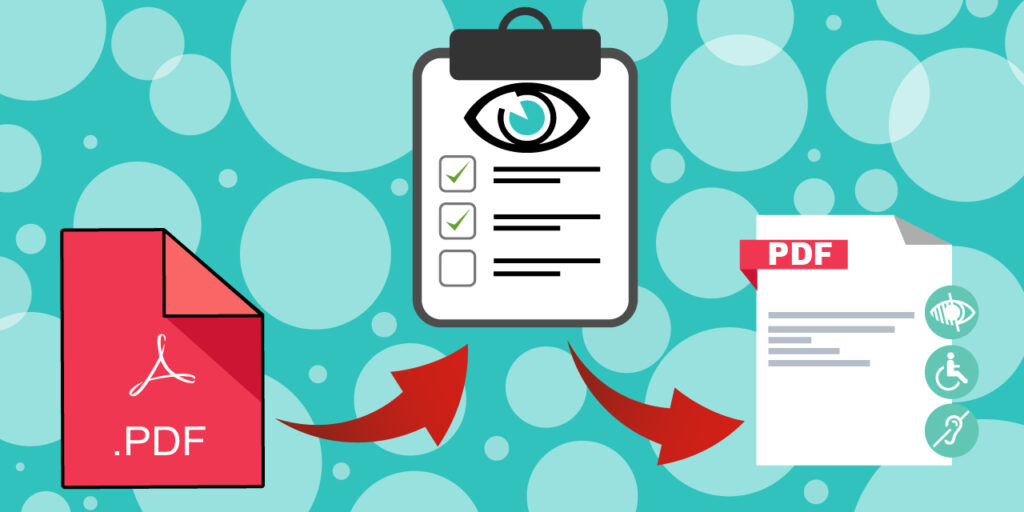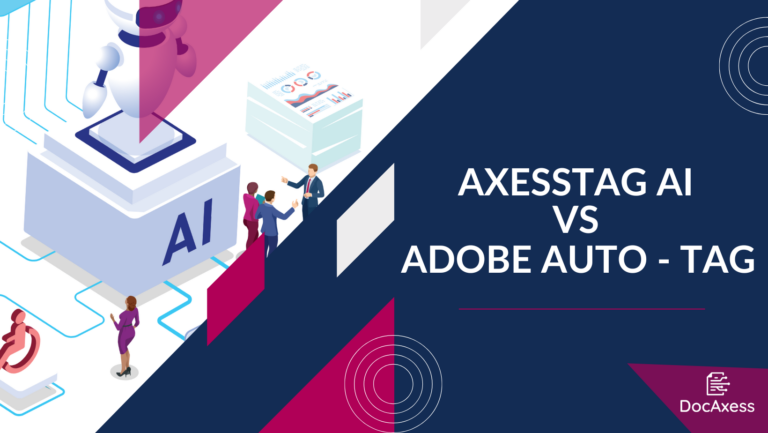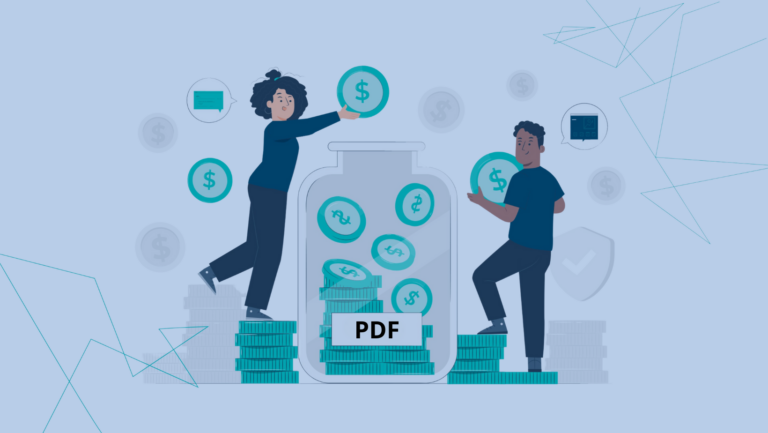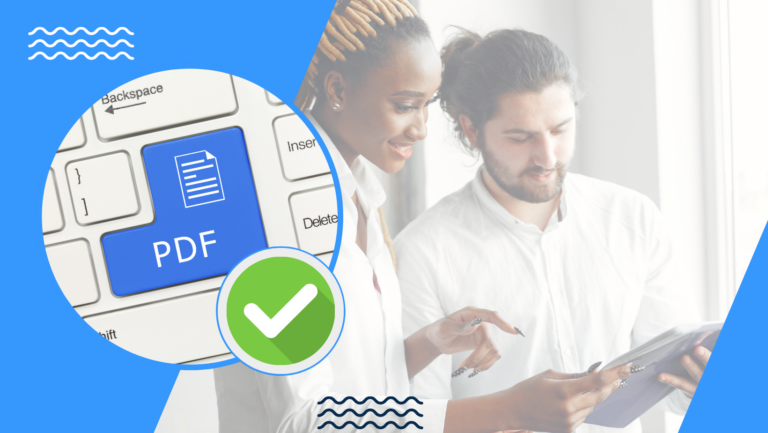The PDF format is the most commonly used in business for exchanging information in a more professional manner. Unfortunately, it has numerous accessibility shortcomings since PDF documents are inherently a visual reading medium, making them inaccessible to the visually impaired and the blind.
Indeed, accessibility issues persist, which can lead to penalties for non-compliance with digital accessibility laws. That is why it is important to act quickly to make your PDF accessible. Here is a comprehensive guide to help you quickly make your digital document accessible to everyone.
Accessible PDF: What is digital accessibility?
The accessibility of a website provides equal access to people with disabilities or those facing challenges with digital devices.
The term accessibility itself pertains to individuals with temporary or permanent disabilities, but it also applies to elderly individuals. Indeed, it helps address the various issues encountered by individuals when using digital tools.
To comply with web accessibility standards, designers must work according to the WCAG 2.1 (Web Content Accessibility Guidelines) standards set by the W3C or the RGAA (General Accessibility Reference of Administrations) 3.0.

Why is PDF accessibility important?
The PDF is not just designed for printing. Many documents are created in this format, but unfortunately, PDF publications are inaccessible to blind individuals using devices like a screen reader. The issue is significant!
To address the numerous web accessibility challenges, Adobe suggests using XML tags in the background of PDF files.
This solution enhances the document’s structure and restores the reading order, promoting accessibility through screen readers or braille displays.
But creating documents accessible through screen readers is limited to text-based reading; more complex PDF publications designed from QuarkXpress or InDesign are, in fact, not accessible through screen readers without further processing.
An ‘XML’ coding, markup language, similar to HTML, is performed in the background of the PDF document to make it accessible.
To access the accessibility of your PDF publication, you can use the verification tool provided by the publisher in Adobe Reader or Adobe Acrobat.
However, certain checks, such as those for tables, links, images, and form fields, need to be performed manually. These elements should be verified with a screen reader like Jaws or NVDA.
What are the benefits of an accessible PDF?
Increasing the audience for your PDFs
Converting a PDF into an e-accessible document allows your colleagues, shareholders, investors, and other stakeholders with disabilities to access information like any other user.
Reaching a wider audience is important, but it is not the only benefit of web accessibility. In fact, it also earns you the trust of the relevant stakeholders, who feel more integrated.
In terms of profitability, by reaching your target audience to the maximum extent, you benefit from a better return on investment.
Making a PDF accessible also involves committing to a quality process as it is subject to the ISO 14289-1:2014 standard.
An overall approach to Corporate Social Responsibility (CSR)
Complying with accessibility rules demonstrates a company’s commitment to engaging in social and societal action. This strengthens the brand’s image.
It’s also a sign of consistency in external and internal communication with stakeholders. Expressing a commitment to disability while not making key communication materials accessible is clearly detrimental.
The concept of accessibility is part of your organization’s CSR (Corporate Social Responsibility) strategy. The goal of social equity is to implement solutions aimed at promoting a 100% inclusive approach.
This social commitment sends positive signals and has a positive impact on your audience’s success.
Furthermore, focusing on document accessibility further supports the ISO 26 000 standard that governs sustainable development (SD) and corporate social responsibility (CSR) initiatives.
Highlighting your non-financial rating
Companies listed on the stock exchange are evaluated based on non-financial criteria (environmental, social, and governance: ESG). This assessment is conducted by non-financial rating agencies.
The goal is to validate the implementation of commitments made by publicly traded companies.
To do this, specialized agencies take into account various parameters, including communication. Is the communication optimal? Consider it the keystone; it must, therefore, be transparent and accessible to stakeholders.
With institutional funds, companies that receive the best ESG rating see their investments grow.
Improving your SEO ranking
With optimized content and easy navigation, the accessibility of your publication is essential to boost your PDF document in Google’s rankings.
The PDF tagging technique allows the algorithm to more easily assess your digital document, improving its positioning in the search engine.
Discover how to make the interactive version of your reference document more visible through SEO.
The opportunity to comply with legal obligations
Digital accessibility in the public sector has been mandatory since the disability Accessibility Law of February 11, 2005, for equal rights and opportunities.
With Article 106 of the OCtober 2016 Law for a Digital Republic, the legal obligation to comply is extended to the private sector.
The decree of July 25, 2019, is categorical: the obligations must be adhered to from the beginning of October.
28 steps to follow to improve the accessibility of your digital documents
Document properties
- View and verify the appropriate metadata, including the title, subject, author, keywords, language, and country.
- Ensure that the document displays the Title (and not the file name).
- Display and verify the correct bookmarks.
- Ensure that the fonts are correctly embedded in the document.
- Test that the characters in text objects are mapped to Unicode.
Proper Labeling
- View the tag structure to check for proper labeling and logical reading order.
- Verify the correct nesting of tags.
- Check for the appropriate use of header tags.
- Selecting a tag in the tag tree highlights the content of the PDF.
- Highlighting content in the PDF automatically selects the tag.
- The Tags Properties panel easily displays the properties of any tag (alternative text, table summary, tooltip, etc.).
- Check and add alternative text to any tag.
- Selecting an error in the verification results displays the element in the PDF.
- Verify the proper role mapping for custom tags.
- Easily view untagged content.
- Check for the presence of empty tags.
- Check if there are empty tags containing alternative text.
Lists and Links
- Test the proper nesting of Lisk and Link tags.
- Test and allow the user to verify the Alternative Text tag for links.
- Test and allow the user to verify the content of link annotations (PDF/UA).
- Test for so-called ‘broken’ links.
Forms
- Testing for the correct assembly of form labels.
- Tooltip Testing.
- Allow the user to verify the accuracy of tooltips.
Tables
- Table Regularity Testing.
- Testing for the correct assembly of table labels.
- Criterion for the presence of table summaries.
- Allow the user to verify the accuracy of table summaries.
How to create an accessible PDF?
The PDF format’s creator, Adobe, has created tools to make this format accessible.
Creating an accessible document from Acrobat Pro can be time-consuming. Using source document creation for an accessible PDF is much faster than post-tagging in Acrobat.
Transform a regular PDF into an accessible PDF
Do you have an accessibility project? A document, activity report, reference document, sustainability report, shareholder guide… to highlight?
Check its accessibility before publishing it.
Today, Artificial Intelligence and technology have a role to play in PDF accessibility. Tools are being developed to assist companies in their compliance.














